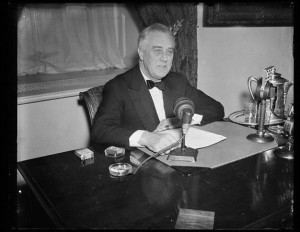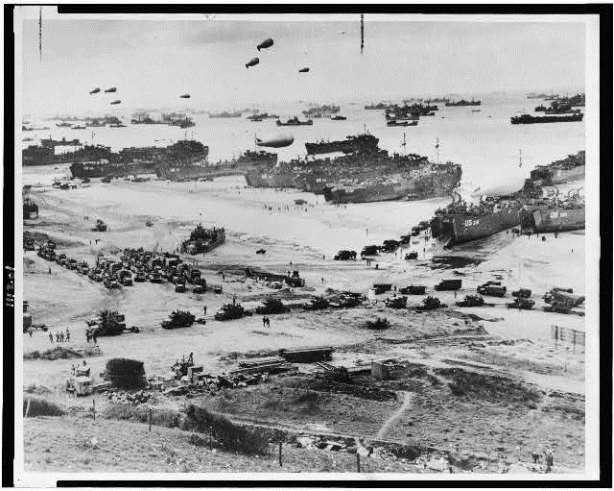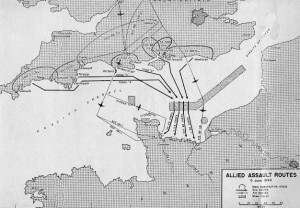Naugatuck, Tuesday, June 6, 1944
Night watchmen in Naugatuck’s factories heard the news first. A lively march on NBC radio was interrupted at 12:41 am with the news flash that the long awaited invasion of Nazi-occupied Europe had begun.
Or had it? Radio announcers warned in the first bulletins that the news could be German propaganda. Not until 3:32 am did General Dwight D. Eisenhower’s London headquarters issue a statement confirming that the invasion, in Normandy, France, had begun.
D-Day had finally arrived.
The night watchmen were clocking out when their neighbors were awakening to the news of the largest land, sea, and air assault in military history. And it was one thing to learn the news, quite another to believe it. The Naugatuck Daily News reported that the “many residents … at 9 o’clock … still were not aware of the invasion and were skeptical when informed of the great event.”
Throughout the morning hundreds gathered at the newspaper’s building. The newspaper obliged the crowd with constant bulletins and maps of the invasion’s multiple locations. A bulletin service to the city’s factories kept curious workers at their much-needed tasks to produce war materiel—from the U.S. Rubber Company’s “Jungle boots” for the GIs in Asia to Mounds candy bars for their rations.

Franklin Delano Roosevelt radio broadcast, ca. 1933-1940 – Library of Congress, Prints and Photographs Division
President Franklin Delano Roosevelt’s Fireside Chat on the previous evening had offered no clue to what would occur only a few hours later. No one in Naugatuck knew if their sons or fathers or brothers, their neighbors or friends, were among those in the first waves of attack. The pictures and names on the front page of the Naugatuck Daily News were those of leaders: American Generals Eisenhower and Bradley, General Montgomery of the British forces, German Chancellor Adolf Hitler. The names of those who flew and those who fought on the beaches would appear in the days and weeks to come, in telegrams and letters, in military lists of the wounded, the missing, and the dead, in newspaper reports. The full story of D-Day would take years to tell.
Yet we may, through the power of recorded sound, return to the moment people learned about D-Day. We are able to hear what earlier generations heard and understand more powerfully their own stories about that historic day.
Shirley T. Wajda, PhD, currently an independent historian living in the Connecticut Western Reserve, is the creator and organizer of Viennapedia, a wiki devoted to the history and culture of her hometown, Vienna, Trumbull County, Ohio.









